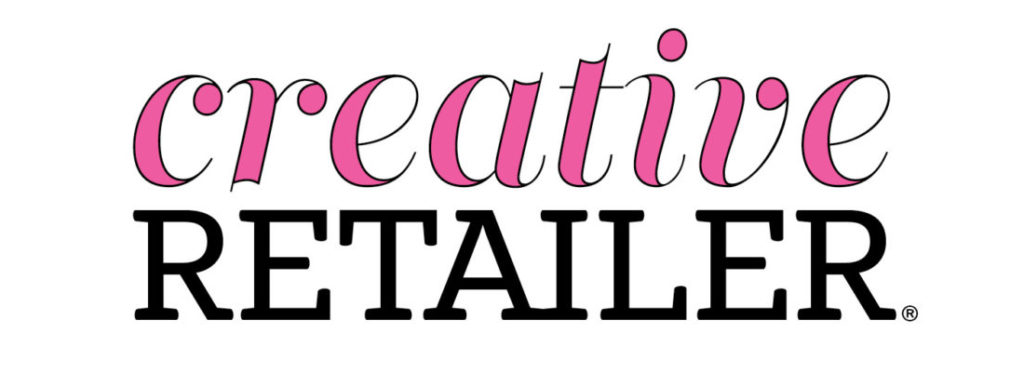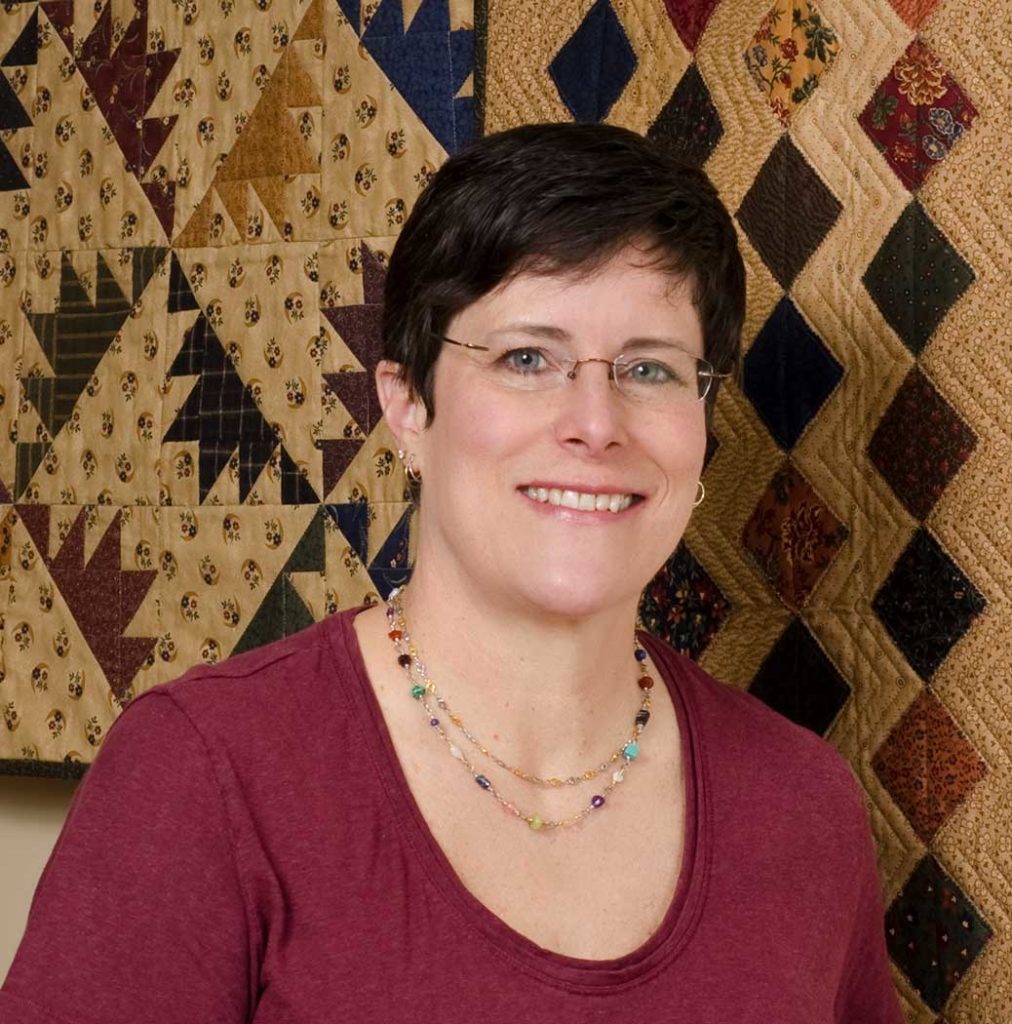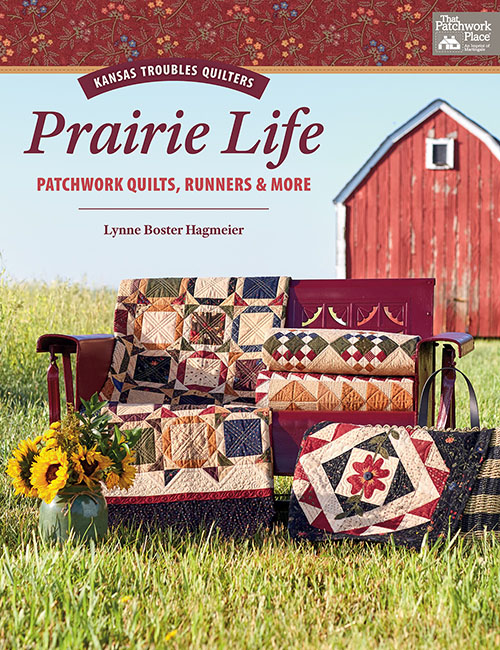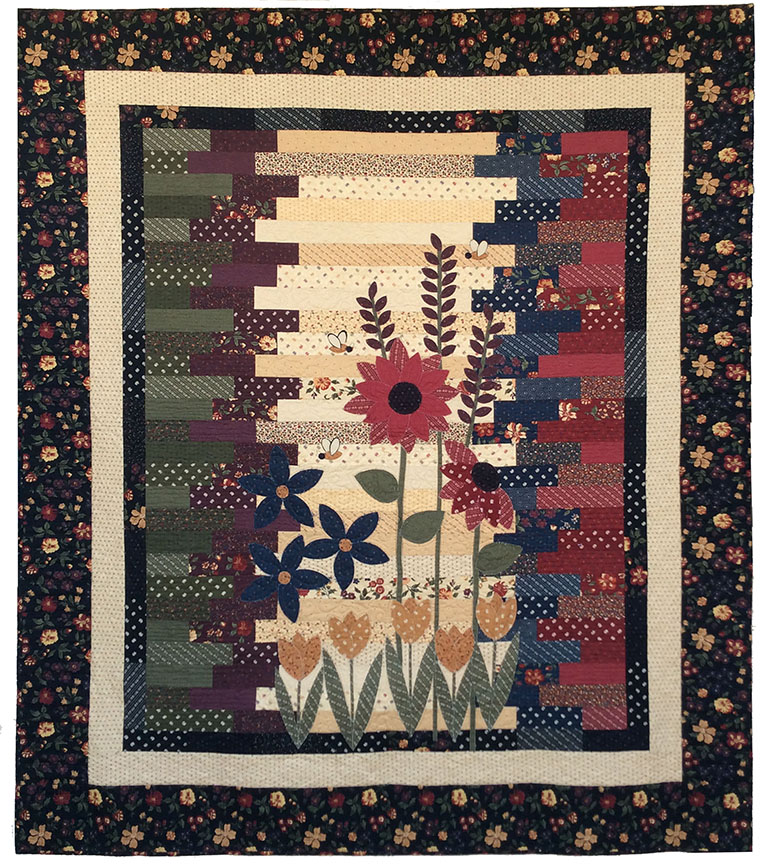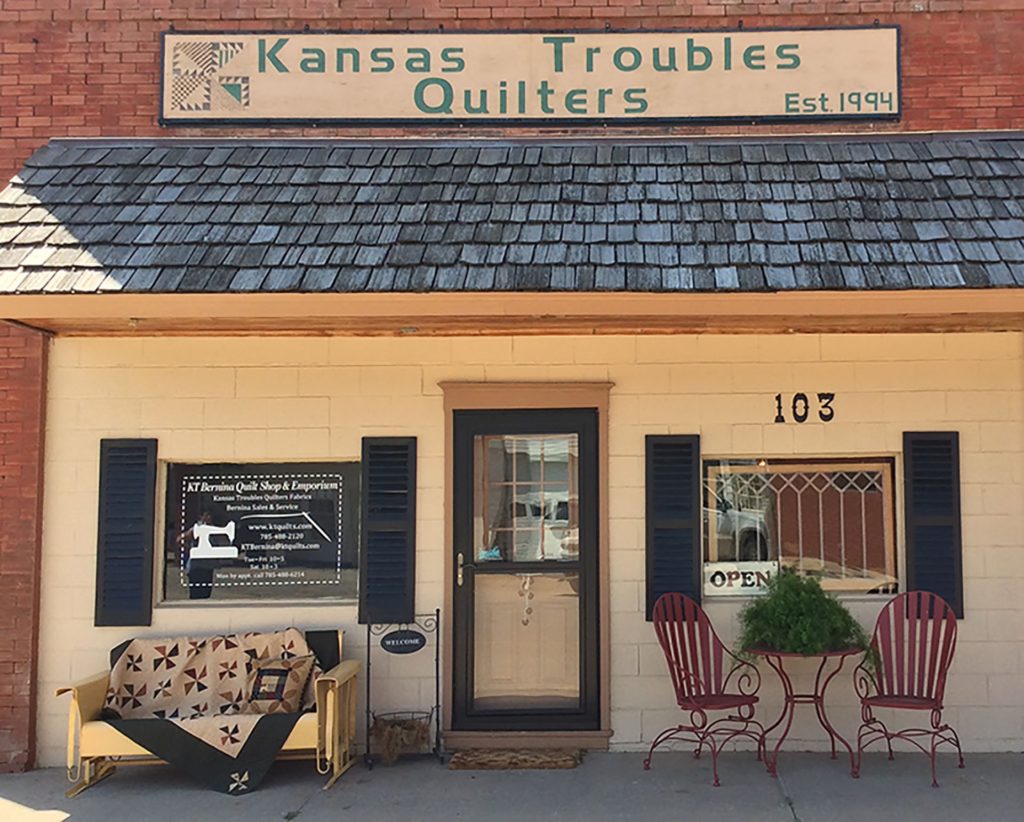Lynne Hagmeier
Kansas Troubles
“Too many ideas, not enough time.”
Celebrating 20 years in business, there’s always something new at Kansas Troubles.
Lynne Hagmeier caught the attention of Mark Dunn, president and owner of Moda Fabrics, when a block-of-the-month pattern she designed created a demand for Moda fabrics that were out of print. It was the late 1990s and applique BOMs were the rage.
“We decided to make a BOM that was mostly pieced for those of us who are applique challenged,” Hagmeier explains. Inspired by historical journals and novels about life on the prairie and the Kansas land rush in the mid-1800s, Hagmeier wrote a fictional journal about a quilter traveling from Kentucky to Kansas in a covered wagon. Each block of “Piecing the Trail to Kansas” corresponded with an entry Hagmeier’s journal.
“Many Moda fabrics were used in the quilt and we listed the sku numbers for quilt shop owners at market,” Hagmeier recalls. “Mr. Dunn came to our booth and asked what we were doing with Moda fabric that was no longer available.” Dunn reportedly loved the Kansas Troubles concept, and, Hagmeier says, “by the end of market, there were enough orders for ‘old’ fabric that Moda reprinted several designs so shops could duplicate our quilt.”
Moda started sending designer swatches to encourage use of their fabrics in Kansas Troubles quilt designs. When Hagmeier used fabrics from another company the following year for another BOM, Dunn inquired why she hadn’t used Moda fabric. Hagmeier’s response: “‘Because you didn’t have any I liked.’ He then kindly invited me to make some fabric for him.”
Hagmeier attended her first market with Moda in the fall of 1999 and her first fabric collection shipped to quilt shops in the spring of 2000, introducing quilters to Kansas Troubles. “I create simple, pieced, country quilts that are easy to make and fun to live with,” Hagmeier says. “Piecing the Trail to Kansas” launched Hagmeier on personal and professional journey from designing patterns part time to designing fabric, opening a quilt shop with retreat space and teaching all over the country.
“It’s surreal to think of all the opportunities quilting has brought to my life over the last 20 years, and how much things have changed for me since being a social worker in the 1990’s,” Hagmeier reflects.
What is the significance of the name “Kansas Troubles”?
When two quilter friends and I began making little quilts to sell, we needed a name for our new business. We looked through Barbara Brackman’s Encyclopedia of Pieced Quilt Blocks for a quilt block with the name Kansas in it, and settled on Kansas Troubles. It was created by a politically-minded quilter during the Civil War as a statement against slavery. I love the tornado style movement in the block.
As a designer, what are your go-to sources of inspiration? How do you describe your design aesthetic?
I love antiques. I prefer worn, aged surfaces to new. I am drawn to vintage fabrics and quilts. I collect old quilts for their beautiful prints and traditional designs. Most of my fabric collections begin with a vintage print with a spring, fall or Christmas theme. Then I add coordinating smaller prints and geometrics to fill out the collection. I almost always add a dot print. It’s one of my favorites.
With credits that include hundreds of patterns, more than two dozen books, and 50 lines of fabric, what fuels your creativity?
It seems one idea spawns half a dozen more. I rarely make a quilt exactly the same way twice, especially from the same fabric. I’ve had a couple of dry spells over the years, but mostly, “Too many ideas, not enough time.”
How do you stay true to the history and vision of your brand while still keeping your ideas fresh and products unique?
I make quilts I would like to curl up with or sleep under or give as gifts to family and friends. As we’ve had grandkids, I’ve adapted my piecing to simplified methods of making quilts so they can love them to pieces and I don’t have as much time and effort in them. My Layered Patchwork technique came about as a way to make a quilt in a day for anyone on your list.
What are some of the biggest changes you’ve observed in the quilt industry over time?
There are so many more fabric companies and designers in the fabric and pattern business. It’s not a cottage industry just for women anymore. The competition is fierce to be noticed and relevant.
Where do you predict the quilt industry is headed next?
You have to offer your products online. I think social media is driving sales, especially for new, young quilters. If you don’t keep up with Facebook and Instagram as a way to market your shop, no one will come. It’s not my favorite part of the job, but the results are worth it.
What are your top three tips for running a retreat center in conjunction with a shop?
- Hire good help. Delegate as much as you can so you can concentrate on your business strengths.
- Offer an inviting space to the quilters. They want to feel comfortable at their home away from home.
- Be glad they’re there. Just smile and listen to their stories about Gramma’s quilt.
You mention on your website that your husband, Robert, joined the business full-time and agreed to do “do everything else” if you handled designing and quilt-making. How is this going for you two? Any advice for other families in business together?
Robert’s brain is the black and white business side, while I live in a gray area on the creative side. It’s true in our business and in our lives. We don’t get into each other’s spaces, but are supportive of each other and offer help & suggestions when needed. He sometimes catches a block turned the wrong way when I’m piecing, and edits my run-on sentences in patterns. We figure, if he understands it, anyone can.
What is the most important thing local, independent quilt shops and/or retreat centers can do to attract and grow their clientele?
Be happy your customers have come into your store. It’s amazing to me how many times I walk into a quilt shop and no one looks up from their desk to greet me, or ask if I need help. Sometimes the simplest things make the biggest impact. If you’re not happy doing what you do, it will show.
What advice do you have for quilt shop owners to maximize sales of your products, including fabric, tools, books, and patterns?
Demo, demo, demo. My rulers and templates, along with my Layered Patchwork technique, are fascinating to quilters. When I show how my method works to simplify piecing quilt blocks, it’s an easy sale. A little time makes for quick sales.
How do you help retailers boost sales?
I am happy to offer trunk shows of quilts with product on consignment for events or shows. I also love to visit shops to teach workshops and share my quilts and stories at trunk shows.
If you had to pick one highlight from your career, what would it be?
It seems every year brings new challenges and new rewards, but this 20th Anniversary year has been special already. I am looking forward to more celebrations throughout 2020.
What is the biggest risk you’ve taken in your career and how did it turn out?
Designing fabric for Moda. I had no idea how to put a fabric line together. Through trial and error and with lots of help and encouragement, it seems to have worked out.
What do you want to do as a quilter, designer, author, or instructor that you have not done yet?
We just held our first KT & Friends Retreat in our small town of Bennington, Kansas. I’ve wanted to host an event here for years and it finally came together. We had a great response, so we plan to do more.
Any final wisdom or advice you can offer quilt shop owners?
Give your customers what they want. You might love batiks, but if your customers want Civil War era prints, or brights, or feed sack prints, listen to them.
There are no translation problems, however, when it comes to the patterns Monroe designs for her company, May Chappell. Monroe strives to write quilting instructions that are clear and accessible to quilters of every skill level. Her teaching is the same. “I teach from my patterns, and the classes include a lot of precision piecing—ways to not cut the tips of triangles or to piece Flying Geese unit onto a half-square triangle and have it be seamless, for example,” she says.
When did you start quilting and designing?
My mom is a big sewer and it was important to her that I learned and so I made clothing when I was younger. I sewed my first quilt when I had my first apartment and saw a quilt I liked in the Pottery Barn catalog, but I didn’t have a Pottery Barn budget. I thought, quilting can’t be that hard, and used fabrics from my mom’s stash to use one. So my first quilt contains scraps from dresses and things she had made me through the years. I kept making quilts and after a while my local quilt shop asked me to teach a class on choosing colors—my background is in fine art and graphic design and I had my own graphic design firm—and when that was finished everyone said, “What’s your next class?” I decided to design a pattern to teach and that was the beginning. I totally owe my local shop owner!
